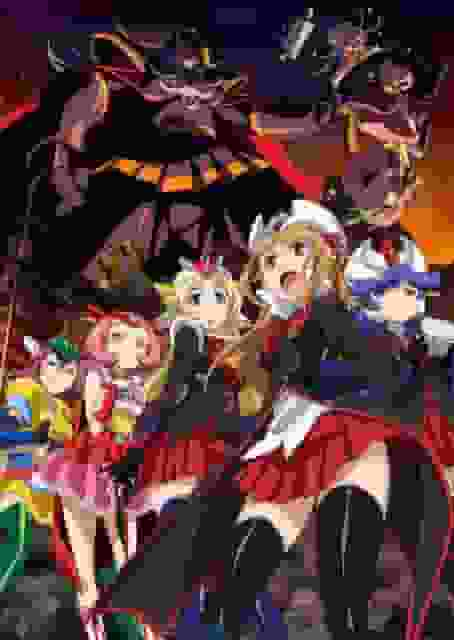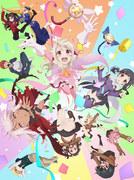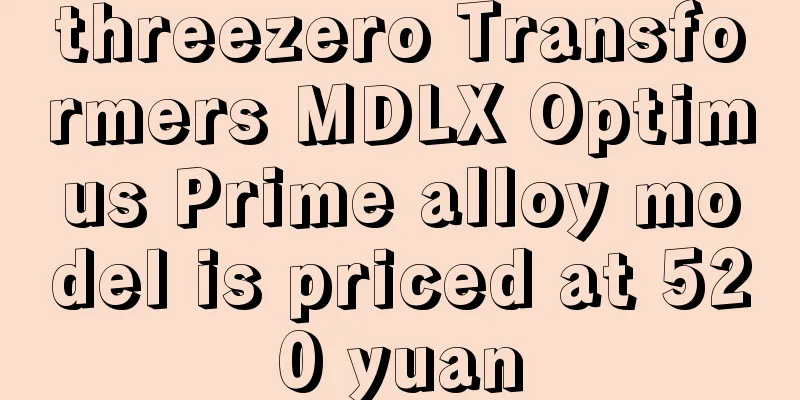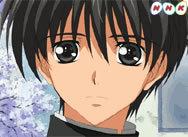"Lucy of the Southern Rainbow" review: A moving story and beautiful visuals
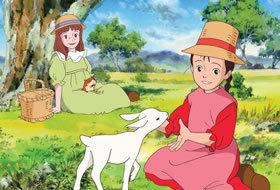
Lucy of the Southern Rainbow: A Family Story from the Australian Frontier"Lucy of the Southern Rainbow," which aired in 1982, is a TV anime series based on Phyllis Piddington's novel "Southern Island." It is also known as the winner of the Agency for Cultural Affairs' Children's Television Award in 1982, and was loved by children at the time. In this article, we will delve deeper into the overview of the work, detailed story, characters, staff, and its appeal. Overview"Lucy of the Southern Rainbow" was broadcast on Fuji TV from January 10 to December 26, 1982, every Sunday from 7:30 to 8:00 p.m. The 50 episodes of the 30-minute program tell the story of a family in the pioneer days of Australia. It is based on the novel "Southern Island" by Phyllis Piddington, directed by Saito Hiroshi, and produced by Nippon Animation and Fuji TV. storyLucy, the third daughter of the Popple family living in England, is a cheerful girl who loves animals. The family emigrates to the frontier of Australia to get their own farm. However, life after the migration is tougher than they expected, and they face a series of hardships. One day, Lucy is hit by a carriage belonging to Mr. Princeton, a large landowner, and loses her memory. Unable to remember anything, Lucy is cared for by the Princeton family, but eventually her memory returns and she is safely reunited with her family. Thanks to the kindness of the Princetons, the family is finally able to get their own farm. Commentary"Lucy of the Southern Rainbow" is based on the novel "Lucy of the Southern Rainbow" by Phyllis Piddington. The novel was still being serialized at the time, but became even more well-known when it was made into an anime. The story is set during the Australian pioneer era from 1837 to 1840, and depicts the bonds of family and the strength of overcoming difficulties. It was also highly praised for its educational value, winning the Agency for Cultural Affairs' Award for Outstanding Children's Television Films in 1982. castThe voice actors were Minori Matsushima as Lucy, Rihoko Yoshida as Kate, Katsuyuki Hori as Arthur, Ikuko Tani as Annie Popple, Sakiko Tamagawa as Clara, Tatsuya Matsuda as Ben, Kimie Nakajima as Mary, Takashi Yasuda as Fred, Kazuhiko Inoue as John, Junpei Takiguchi as Pettiwell, Mie Suzuki as Billy, Miyoko Asou as Granny, Kaneta Kimotsuki as Dayton, and Yumi Takada as Tob. These voice actors bring out the individuality of each character, adding excitement to the story. Main StaffIt is based on Phyllis Piddington's novel "A Tropical Island" and is set in Australia from 1837 to 1840. Produced by Motohashi Koichi, production management by Takakuwa Mitsuru, planning by Sato Shoji, music by Sakata Koichi, producer Matsudo Ryuji, script and character design by Seki Shuichi, scene design by Sakai Shunichi, animation directors Maeda Hidemi, Murata Koichi, Moritomo Noriko, Takano Noboru, art director Abe Taizaburo, cinematography by Kuroki Keiichi, sound director Shigeji Shiba, color design by Yasuda Michiyo, animation checks in-house, animation by Takematsu Issei, Ushigoe Kazuo, Noda Michiko, Nakagawa Toshiko, Murata Akiko, Mieno Yoichi, Oh Production, Shoji Toji, key animation by Yasuda Natsuyo, Furuyama Takumi, Iwasaki Kiyoe, Sato Yoshiharu, Sato Katsuji, Otani Atsuko, OH Production, Murata Koichi, Takano Noboru, Tsukada Kumiko, Matsumoto Masayo, Studio Housing, Oka Yutaka, Sakai Shunichi, Noda Michiko, Asato Sumiko, Takematsu Issei and others , finishing was done by Studio Robin, backgrounds by Studio Aqua and Studio Loft, photography by Trans Arts, sound production by Audio Visual System, mixer by Kuwabara Kunio, effects by Yoda Yasufumi (Fizz Sound), recording studio by Taihei Studio, developing lab by Toyo Development, title by Michikawa Akira, editors by Seyama Takeshi, Kamitano Hidetoshi, Warita Masuo, storyboards by Kiyose Jiro, Kusuba Kozo, Suzuki Takayoshi, Koshi Shigeo, assistant directors by Kusuba Kozo, Koshi Shigeo, Suzuki Takayoshi, assistant directors by Saito Jiro, Sugimura Hiromi, production desk by Sekiguchi Shuichi (episodes 1-10), Masuko Sojiro (episodes 11-18), Kozō Shunichi (episodes 19-50), production assistants by Yogo Akio, Suzuki Takashi, Yamaguchi Takeshi, Kasahara Yoshihiro, Koseki Shuichi, production by Nippon Animation and Fuji Television. These staff members worked together to improve the quality of the work. Main CharactersLucy is a 7-year-old girl who loves animals and hates studying and helping around the house. She is always together with her sister Kate and seems to have fun, but in the later episodes she shows a slightly darker side. Kate is 10 years old and often acts like Lucy, but she is often annoyed by Lucy's silly remarks and often says, "You're stupid!" Arthur is a quiet father, and in the latter half of the series he tends to drink a lot because his life is far from ideal. Annie Popple is a quiet and reliable mother who watches over Arthur and the rest of the family. Clara is the eldest daughter and is a reliable person who can handle adults. She marries John, whom she met on a ship. Ben is the eldest son and actually wants to be a doctor rather than a farmer. Tob is the second son and is an infant in the first half of the series. The story depicts the characters deepening their bond as a family while having their own personalities. subtitleThe subtitles for each episode are as follows:
Theme songs and musicThe opening theme is "I Want to Be a Rainbow," with lyrics by Kazuo Fukazawa, music and arrangement by Koichi Sakata, and singing by Sumiko Yamagata (Canyon Records). The ending theme is "Come to the Forest," with lyrics by Kazuo Fukazawa, music and arrangement by Koichi Sakata, and singing by Sumiko Yamagata (Canyon Records). These songs add to the atmosphere of the work. Appeal of the work"Lucy of the Southern Rainbow" is a story about family ties and the strength to overcome difficulties. It is moving to see how the Popple family, with Lucy at the center, come together as one to build a life in a new land, despite their individual personalities. The story is set during the Australian pioneering period from 1837 to 1840, so the historical background is interesting and the story can be enjoyed by adults as well as children. It was also highly praised for its educational value, winning the Agency for Cultural Affairs' Award for Outstanding Children's Television Films in 1982. Recommended points"Lucy of the Southern Rainbow" is a work that depicts family ties and the strength of overcoming difficulties, and is enjoyable for both children and adults. In particular, the episodes that depict Lucy's cheerfulness and family ties are very moving and give courage to the viewer. The historical background of the Australian pioneer era is also interesting, making this a work of great educational value. It was also recognized as the winner of the 1982 Agency for Cultural Affairs' Excellent Children's Television Film Award, so be sure to give it a watch. |
<<: Gauche the Cellist: A thorough review of the fusion of moving story and music
>>: The appeal and reviews of the New Year's special anime "Romance of the Three Kingdoms"
Recommend
Two new concept images of the shelved "Alien 5" movie were exposed
Some new concept art for Alien 5 has leaked onlin...
Nintama Rantaro Season 25: A new adventure and a path of growth
The appeal and evaluation of the 25th season of &...
Demon Slayer Season 3 New Art Picture One-Hour Special Edition to Be Aired on April 9
The third season of the popular anime "Demon...
The charm and unexpectedness of Cheburashka: A surprising world
Cheburashka Huh? - The Adventures of a Loveable a...
Ip Man 4's box office exceeds 700 million! New ink-style poster shows benevolence and martial virtue
Today (December 30), the official Weibo of the mo...
The main art of the new animation "Devil-kun" to commemorate the 100th anniversary of Shigeru Mizuki's birth
One of the 100th anniversary of the birth of Mizu...
Jon Snow returns, reports say Game of Thrones TV sequel is in production
When Game of Thrones arrived on HBO, few could ha...
Official announcement: The Witcher TV series season 3 officially begins filming
According to the official Twitter account of &quo...
A man from an island country was prosecuted for selling famous anime T-shirts without permission
Japan is world-renowned for its strict control ov...
The appeal and reviews of "Absolute Duo": New possibilities for school battle anime
Absolute Duo - In-Depth Review and All-Round Guid...
"Slam Dunk" new animated film voice actors are all replaced, fans are dissatisfied with not being able to regain their memories
The new "Slam Dunk" animated film "...
The 4K restored version of The Chorus is scheduled to be released in mainland China on December 2
Sina Film reported today (November 24) that the 4...
The appeal of the otherworldly izakaya: A thorough review of "Nobu" in the ancient city of Aiteiria
The appeal and reviews of Another World Izakaya -...
Dinosaur Planet review: A spectacular story of an amazing world and dinosaurs
Dinosaur Planet - Dinosaur Planet - Comprehensive...
The new series "Gundam: Witch of Mercury" officially announced that it will be broadcast on October 2
Nearly 7 years have passed since 2015's "...

